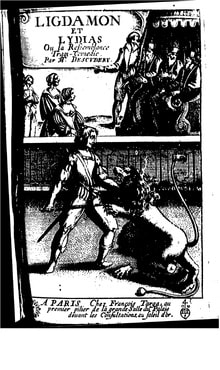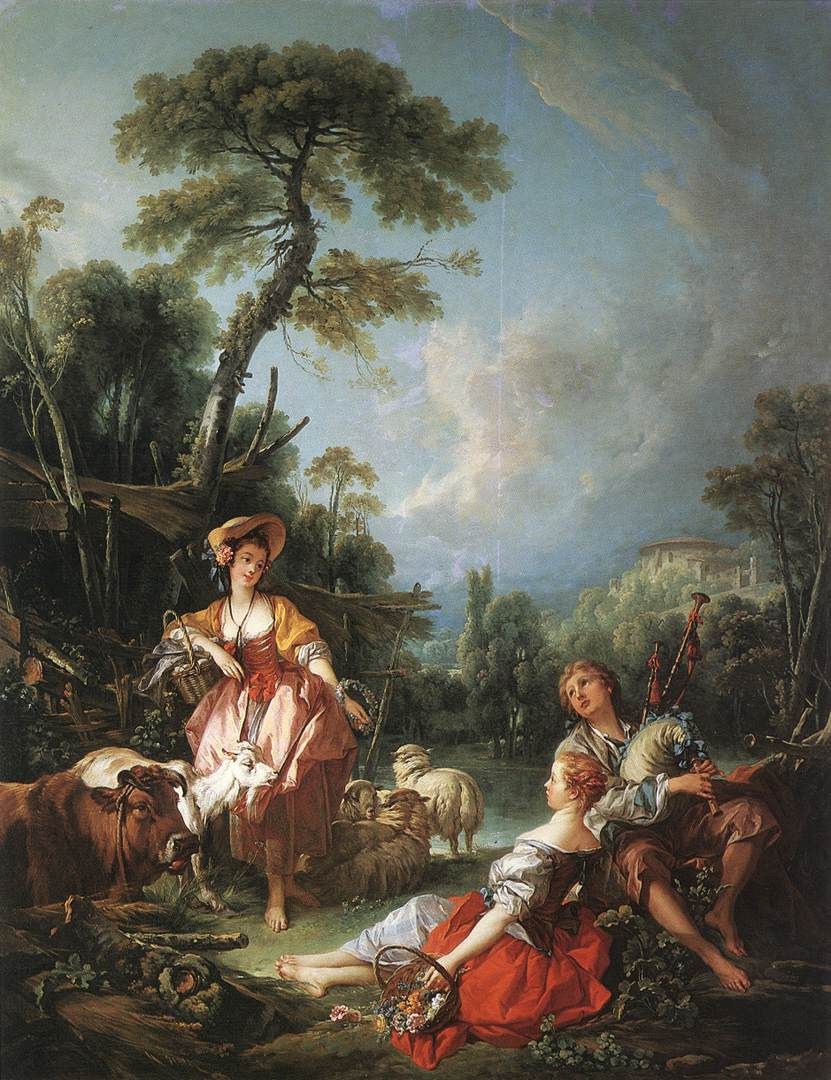|
This play engages in a common theatrical device of the period, mistaken identities as the crux of its drama. Ligdamon is in love with Sylvie, who pretends she doesn't love him back, while Lidias and Amerine are in love with each other. Lidias and Ligdamon are confused for each other and much physical comedy is played off of the situations they find themselves in, but it lacks the plot structure that we see in similar plays of the period, notably plays like Shakespeare's The Comedy of Errors. That play leans into the pure comedy of misunderstanding, while Ligdamon et Lidias tries to find a tragicomic middle ground. While the characters nearly die from the misunderstanding, this does not feel tragic, but nonsensical. I can understand why neoclassic writers believed that the mixing of comedy and tragedy were cheapening to both when presented with plays such as this. Not that I believe that humor and tragedy cannot be mixed, but like anything else, it should be constructed with some foresight, whereas this play feels like an awkward combination of two separate plots.
0 Comments
This play is described by its author as a heroic poem, though interestingly the large part of it is not written in verse. The plot is fairly bland; two couples whose love is derailed by well meaning parents. This leads to attempted murder and two faked deaths to end with a happy conclusion. As I've noted from several other plays in this period, this play takes many cues from Elizabethan drama with its misadventures and misdirections, but I'd like to focus on a dramatic device that was common in Elizabethan drama, but is also seen in Celinde, the play within a play. Typically the play within a play structure is a smaller scale illustration of what is happening in the play itself, in order for the characters to have a dialogue in a meta-narrative. In Celinde however, the play performed in the third act is a dramatization of the life of Judith, which is interrupted by the attempted murder of Floridan. I found this puzzling because the two stories seem to lack a common theme. Judith uses deception and her sexuality to infiltrate the enemy and save her people, while Celinde is driven to murder from the desperation of her situation in a marriage that she wants to avoid. It should be noted that Floridan is not the one pressuring her into this marriage, but instead her father. I have no answer as to the relation between the play within a play and the larger plot of Celinde, but it is nonetheless interesting to consider the reasons for its inclusion.
This play was tricky in a number of ways. It is clearly a pastoral, all of the characters are shepherds and shepherdesses running around and in love with each other. Sylvanire, the title character, holds the heart of several men, at one point the text jokes “Who isn’t in love with Sylvanire?” She is not your typical heroine however, batting off men’s advances with wit and cunning. The debates between characters are reminiscent of Renaissance love dialogues, with long arguments over the nature of love, who has the right or duty to serve the other sex, etc. It is clear to me that Sylvanire wins all of these battles of wits, so one would expect that her spurned male lover would simply take her by force and carry her off, but instead he poisons (or maybe cursed? It was not clear) her with the goal of getting her alone to have his way with her. It is a common trope that poison is a woman’s weapon, so this further flips the gender roles where Sylvanire always seems to come out on top, whether it be with jilted lovers, admirers, or her father. This poisoning episode reminds me of a happier version of Romeo and Juliet where the plot is discovered at the last moment and the two are saved. But this dip towards the tragic casts a dark shadow over the rest of the play, leaving the audience confused as to whether this was a tragedy or a comedy. Plays like this help to explain the neoclassical desire for the clarity of genres, as a way to remedy unclear plots and emotional rollercoasters. Indeed, Sylvanire has much more in common with the Elizabethan drama than the neoclassical french.
|
Jennifer KellettM.A. French Literature Florida State University Archives
June 2021
Categories |
Photos used under Creative Commons from mharrsch, Renaud Camus



 RSS Feed
RSS Feed
